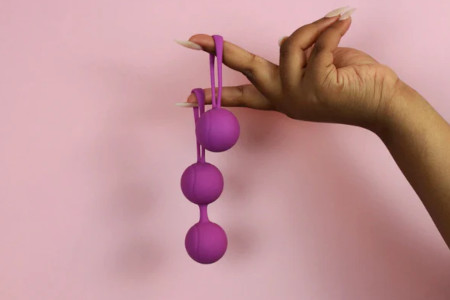
What Kegel Balls are: How in 4 Steps and Their Benefits
Kegel balls are small, weighted devices that can strengthen your pelvic floor muscles, reduce urinary incontinence, and even enhance sexual satisfaction.
Chair for incontinence vs Elitone: Which is the best device for you? Incontinence affects around 50% of all adult women. If you experience leaking you’re not alone.
However, just because something is common, doesn’t mean that it’s normal. Fortunately, there are lots of treatment options available that can improve your symptoms and quality of life.
These range from pelvic floor therapy and at home exercises, to medications or surgery, or a pelvic floor device that can be used in office or at home to help tone your pelvic floor. Let’s talk more about two popular high-intensity focused electromagnetic (HIFEM) devices and how they can help you.
HIFEM devices are a non-invasive treatment method used for various medical purposes, including urinary incontinence. These devices are designed to strengthen the pelvic floor muscles and reduce urinary leakage when used regularly. Learn more about picking the best HIFEM device for you.
A chair for incontinence may be a good pelvic floor device option for you to consider to treat urinary incontinence. By using the HIFEM technology, a session on a chair can help to improve control of the pelvic floor muscles and bladder.
While this pelvic floor device treatment is non-invasive (you remain clothed), you will be required to visit a practitioners office regularly for your sessions.
The treatment can also be cost-prohibitive for some patients, costing $2000-$3000 for a series of six sessions.
Elitone is a pelvic floor device that uses neuromuscular stimulation to target the pelvic floor and surrounding muscles.
Elitone is an external personal pelvic floor device that you can use at home for twenty-minute sessions. Its ergonomic shape allows you to sit, stand, or walk during use, making it easy and convenient.
Within six to twelve weeks, you should see an improvement in leaking and feel more confident.
Elitone is also offered at an accessible price point, and payment plans are available. While many women may experience incontinence, we want to make effective treatment available to as many as possible.
If you’re ready to take back control of your bladder and enjoy life free from worry about leaks, Elitone can help!
A pelvic floor chair is a non-invasive medical device that uses High-Intensity Focused Electromagnetic (HIFEM) technology to strengthen the pelvic floor muscles. You sit fully clothed on the chair, and it induces thousands of “supramaximal” muscle contractions, far more intense than what can be achieved through voluntary Kegel exercises alone. This strengthens the pelvic floor, which can reduce urinary incontinence.
While both aim to strengthen the pelvic floor, they operate differently. A pelvic floor chair uses HIFEM technology in a clinical setting, whereas the Elitone device is a discreet, external, at-home device that uses neuromuscular stimulation. Elitone is placed directly on the perineal area and sends gentle electrical signals to stimulate the muscles. Elitone doesn’t require in-office treatments and has a one-time cost of $399 versus multiple session costs.
Both treatments are generally described as painless. You may feel tingling and rhythmic contractions in the pelvic floor muscles, but there is no pain or downtime. You can resume your daily activities immediately after a session.
A typical treatment course for a pelvic floor chair consists of six sessions, each lasting about 20-30 minutes. These sessions are usually done twice a week for three weeks. The Elitone device is used for 20 minutes a day, typically for six weeks. With the chair, you may need an additional six sessions at a later date.
Most people notice a difference after just a few sessions, with significant improvements typically seen within the first three weeks of consistent treatment.
The chair results can last for up to a year, but many practitioners recommend maintenance sessions every 3-12 months to sustain the benefits. Continued at-home Kegel exercises can also help prolong the effects.
Elitone results are similar, and with Elitone being something you can take home, maintenance sessions are easy, making results last even longer.
Both treatments are generally well-tolerated with minimal side effects. Some individuals may experience mild muscle soreness, similar to what you might feel after a workout, but this is usually temporary.